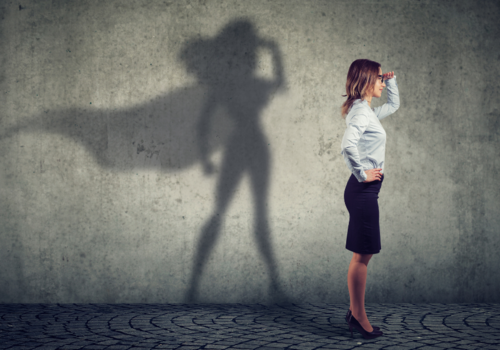
As the pandemic drags on, you need to be a durable human. Simply being resilient doesn’t cut it anymore. New findings point to why.
White House chief medical adviser Anthony Fauci wants our response to the COVID vaccine to be as durable as possible.
Arizona Senator Krysten Sinema says only laws with bipartisan backing will be durable.
On Joe Rogan’s podcast, New York University social psychologist Jonathan Haidt spoke of how “parents and teachers should be helping kids develop their innate abilities to grow and learn.” He used “antifragile.”
Lebanese-American essayist Nassim Nicholas says he coined that term because “there is no word for the exact opposite of fragile.”
But, actually—there is.
Durable: The Word We are Searching For
Endure and durable share the Latin root durare, which means to last. Meriam-Webster defines durable as “staying strong and in good condition over a long period of time.”
Resilience is “the ability to become strong, healthy, or successful again after something bad happens.”
To be a durable human is not merely to bounce back from adversity, but to have the inner shock absorbers to withstand the constant bumps on the road of life.
“When we think about being durable,” I told host Hillary Wilkinson on her Healthy Screen Habits podcast, “we have to think about what are we. What is our edge as a human being.”
That is, the powers we have as human beings that our “smart” devices don’t. Phones and sensors may be able to “see” and “hear” as they try to emulate our famous five senses. But it’s all the other senses that machines lack.
“They don’t have intuition. They don’t have compassion. They don’t have curiosity.” Those are only a few that I named for Hillary.
Our job is to keep our human senses durable and our human selves different.
If kids spend too much time caught up in others’ creations (video games and social media, especially), they can’t follow their own curiosity. They won’t come up with their own ideas. Eventually, humanity could become more like a herd of sheep.
As I write in The Durable Human Manifesto,
“The danger is that when individuals are no longer diverse in outlook and action, they will contribute less as a group. With little to differentiate them or to offer society, humans could actually become irrelevant. At that point, it will be easier and cheaper to replace them with robots.”
Positives of the Pandemic

Parents used their human intuition to help their kids be more durable during the pandemic.
The American Academy of Pediatrics surveyed thousands of its members and learned that many families managed to create a loving, safe-feeling, and even hopeful home as the pandemic raged around them. Pediatricians dub that a “positive childhood experience.”
Other adults also played a big role in kids’ COVID-era lifestyle. According to the May 2021 report in the journal Pediatrics, “Children have felt the caring of grandparents, teachers, health providers, home visitors, and others who persistently connected by phone, text, and/or video chat.”
A PCE is the opposite of an ACE, or an “adverse childhood experience.” While an ACE damages a child’s mental or physical health, a PCE builds kids’ self-esteem and emotional durability.
Adversity pushes us to dig deep into our inner resources. As I write in The Manifesto,
It’s often when we’re forced from the familiar that our durability will shine.
The Pinch of Generosity
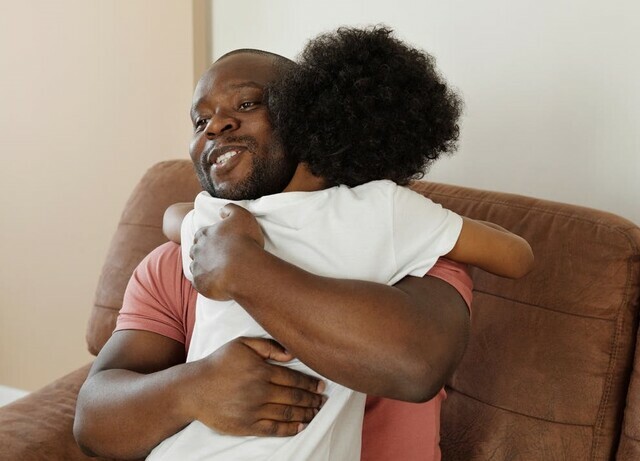
But even with so much human-to-human support both online and off, many kids have drifted into not-so-healthy digital habits that are interfering with their human assets.
Surveys show the way they used technology during the pandemic has damaged their social skills, confidence, attention spans, and vision.
Kids need their parents and other loving adults to help them get back on track. To do that, we need to fully see and hear them so we can help sort out their hurt and confusion.
The term “continuous partial attention” means always having an eye (and most likely a hand) on your phone, even when you’re talking with someone face-to-face.
“It’s very damaging for children’s self esteem,” I said to Hillary. “It forces them away and, in fact, can force them into relying on their devices.” Instead of on you.
Admittedly, it’s hard not to always be In The Know. It can hurt to set aside your phone so you can give your child your full attention. But when you feel that pinch of generosity, know you’re laying another brick in the foundation of your child’s life success.
The Road to Durable
How To Be a Durable Human is filled with easy, no-cost ways to create secure attachment with your child as you build their (and your) durability.
You can also listen to the Healthy Screen Habits podcast.
About the author:
Jenifer Joy Madden is a certified digital wellness specialist, a Syracuse University broadcast and digital journalism adjunct professor, and founder of DurableHuman.com.

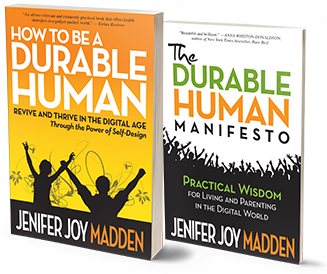
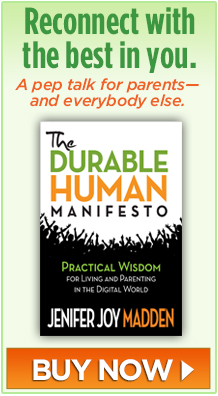
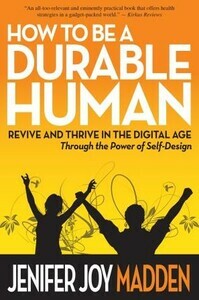


thanks for great explanation indeed but sincerely I’m talking of poverty people in IDPs for resilience and durable solution to human conceptional way of life.
Thanks for your follow-up question @Mohamed. In my opinion, durability does not depend on economic status, but upon personal integrity. To be durable is different from being resilient. Resilience is the capacity to recover from adversity. To be durable is to be strong and capable and to withstand adversity over the long term and even benefit from it. To be durable is to acknowledge and take advantage of those abilities and senses you have as a human being that your devices do not have, such as intuition and compassion. I started Durable Human because I felt that our durability was threatened by the way we use devices. In the case of children, each child is born with a special something that it will take a while for that child to discover. Giving a child a device too soon steals the time they need for that discovery process. Too much time spent on devices, either by the parent or the child, steals a child’s ability to learn from other loving humans around them, such as how to speak, manage their emotions, and even how to love. My books help you better understand the concept of Durable. How to Be a Durable Human (https://durablehuman.com/HowTo) is written for adults but has advice for parents in every chapter. The Durable Human Manifesto is meant to inspire parents to love and respect their child’s need to discover themselves and put technology in perspective. You can download the Manifesto for free here https://durablehuman.com/ManifestoDownload